25 words that were born in the 1960s
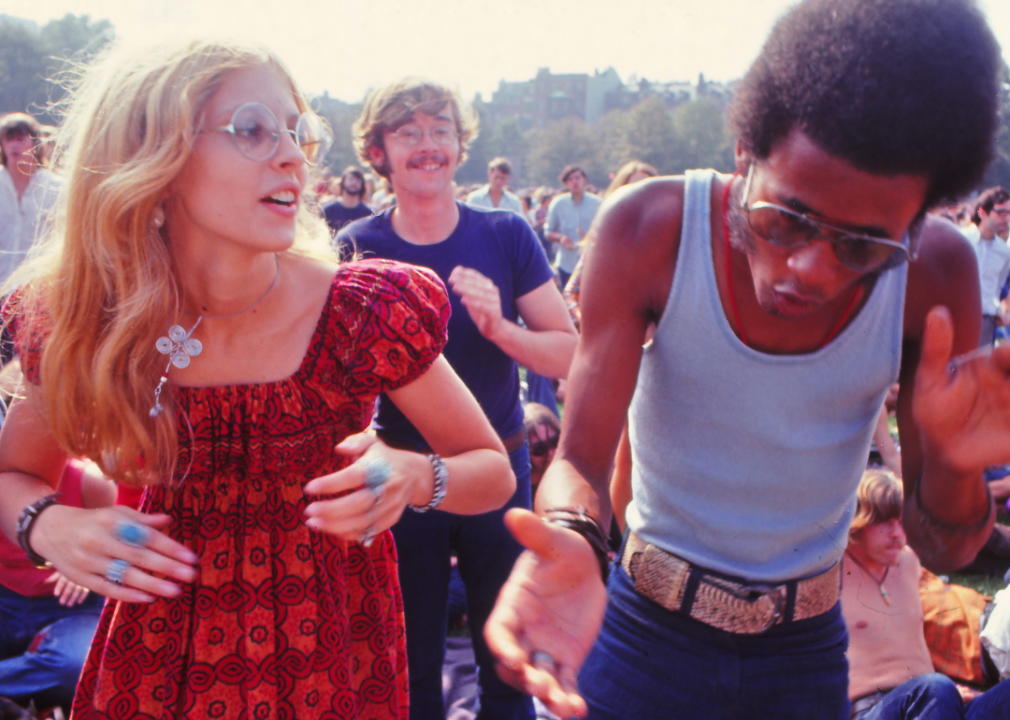
Owen Franken // Getty Images
25 words that were born in the 1960s
Couple dancing in a public park.
The 1960s were a particularly fruitful time for words abundant in our lexicon today. Scientific advancements gave rise to new technologies, and medical conditions were identified. Meanwhile, cultural touchstones such as theme parks and phenomena like midlife crises entered the mainstream for the first time.
To see which words shaped the past, Stacker compiled a list of 25 new words born in the 1960s by consulting Merriam-Webster’s Time Traveler to identify words first written or published in English between 1960 and 1969.
It’s worth noting that words on this list were written or printed in English in these specific contexts for the first time in the 1960s; however, these words could’ve been used long before they were officially documented. For instance, “Black Friday” was originally used to describe a gold-based stock market crash in the 1800s, not a post-Thanksgiving shopping event.
Being added to the dictionary is not taken lightly. Each day, Merriam-Webster editors comb publications—books, newspapers, magazines—and add them to a repository of citations. When there are enough citations in various published materials to show a word is actually used widely, then dictionary editors come in to write an entry. It’s painstaking, never-ending work, especially considering an estimated 1,000 words enter our vocabularies every year. Still, the results can paint a picture of an era, and sometimes—like the ’60s—it’s quite exciting.
From dog breeds to demographic changes, here are 25 words officially coined in the 1960s.
![]()
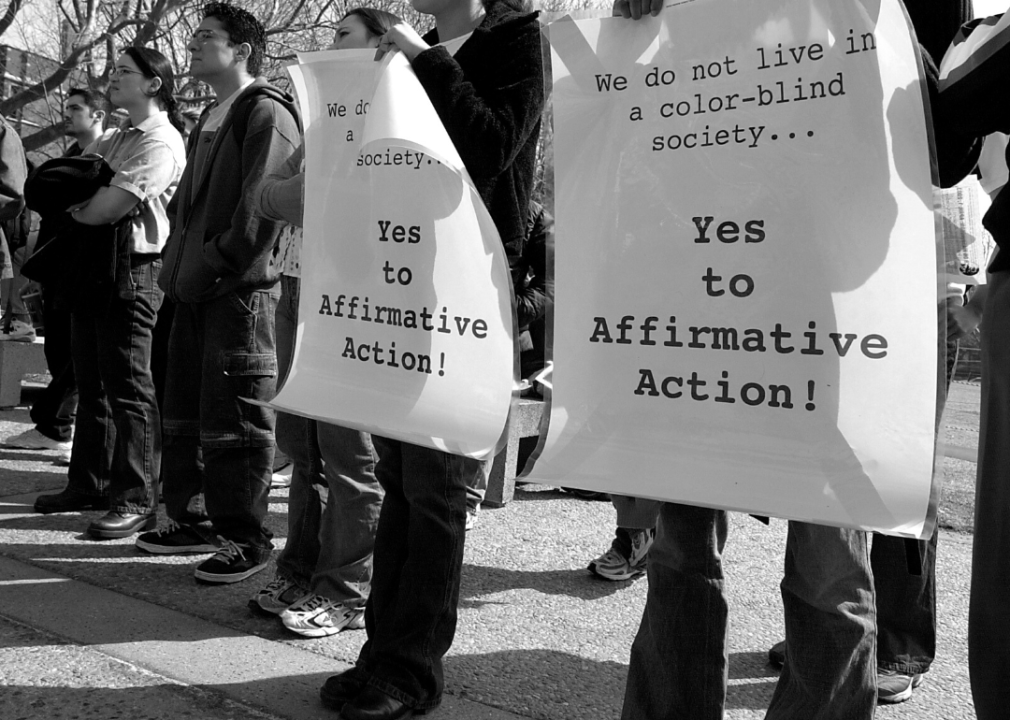
Douglas McFadd // Getty Images
Affirmative action
Students at rally to defend affirmative action.
Affirmative action refers to policies designed to alleviate unlawful discrimination against certain demographic groups regarding opportunities like college admissions and job hireability. The term entered the dictionary in 1961, when President John F. Kennedy issued an executive order that included a provision that government contractors should take steps to ensure there were equal opportunities for applicants regardless of “race, creed, color, or national origin.”
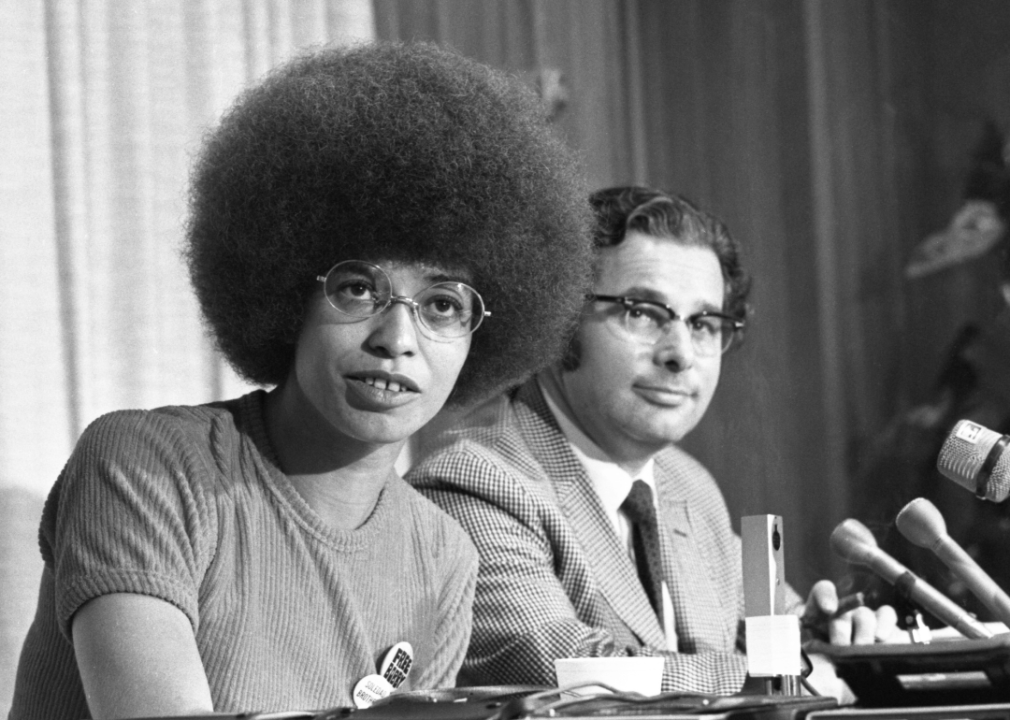
Bettmann Archive // Getty Images
Afro
Angela Davis speaking at UCLA.
An afro is a Black hairstyle featuring tight curls in a rounded, full shape. The style was worn by prominent civil rights activists such as Angela Davis and Jesse Jackson, symbolizing Black liberation, beauty, and pride.
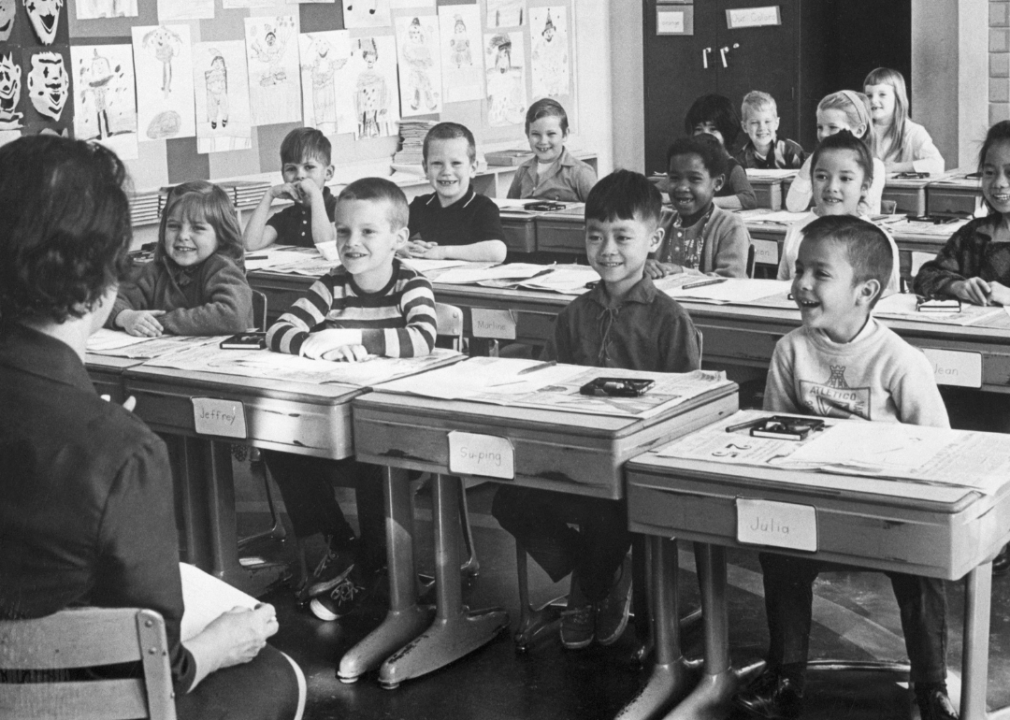
Bettmann // Getty Images
Baby boomer
Smiling first grade students in classroom.
Although the term “baby boom” dates to the 19th century, the term “baby boomer” was later used to refer to the generation of Americans born during the major spike in U.S. births between 1946 and 1964, which followed the end of World War II. The term was first used in a 1963 Newport News Daily Press article noting the impending spike in college applications now that this generation was approaching adulthood.
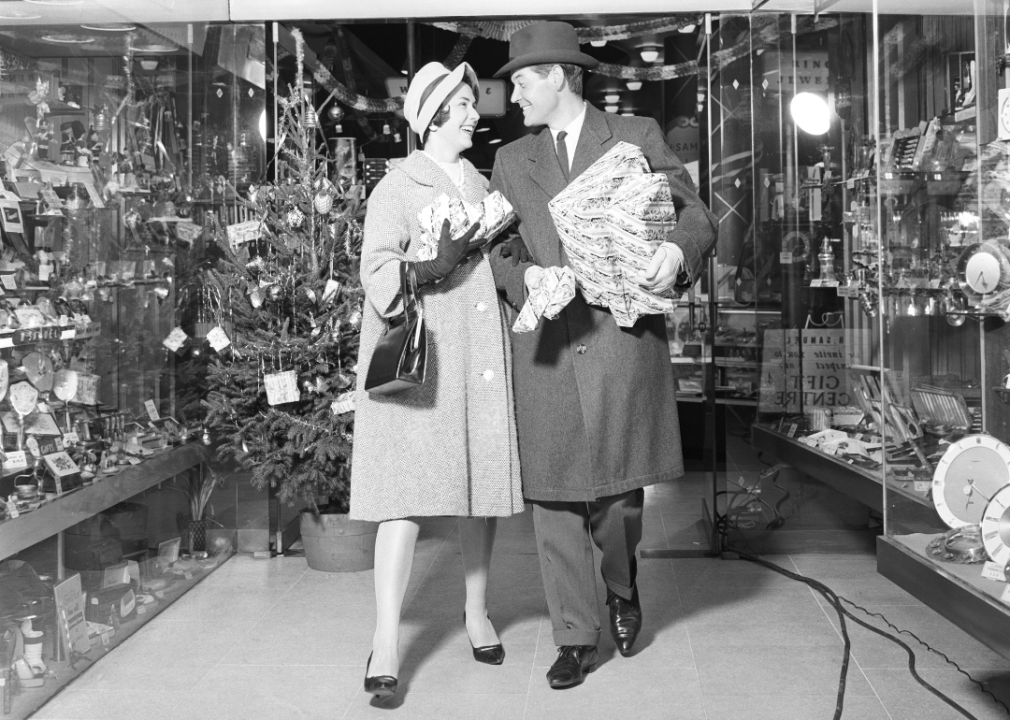
Bert Hardy Advertising Archive // Getty Images
Black Friday
Couple leaving store with packages.
The first use of “Black Friday” dates back to 1869. It was used to name the day gold prices dropped steeply, causing a U.S. market crash. The modern, post-Thanksgiving shopping meaning of the phrase originated in Philadelphia in the early ’60s, when cops used it to describe the dreaded traffic jams surrounding retail stores on that day.
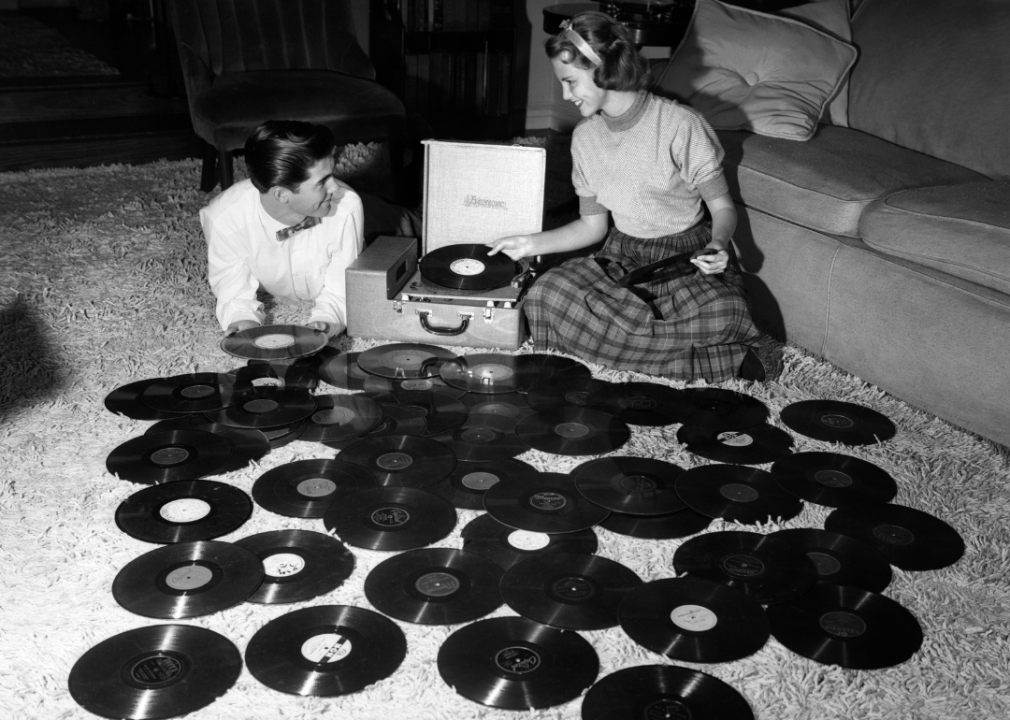
Debrocke/ClassicStock // Getty Images
Bubblegum
Teenage couple with with records.
Beginning in 1969, bubblegum didn’t exclusively refer to chewing gum anymore. It was also used to describe media specifically catered to preteens and teenagers—most noticeably in music. An entire “bubblegum pop” subgenre emerged featuring upbeat, simple songs aimed at young audiences. Notable bubblegum pop artists of the time included the Archies, the Partridge Family, and the Ohio Express.

Npudov // Shutterstock
Cochlear implant
Cochlear implant on hearing test.
Cochlear implants are electronic devices that help give a sense of sound to deaf people and people with hearing loss. They were first invented in 1961 by American surgeon William House and engineer Jack Urban. The first implants were done that same year in Los Angeles by Dr. House and neurosurgeon Dr. John Doyle.
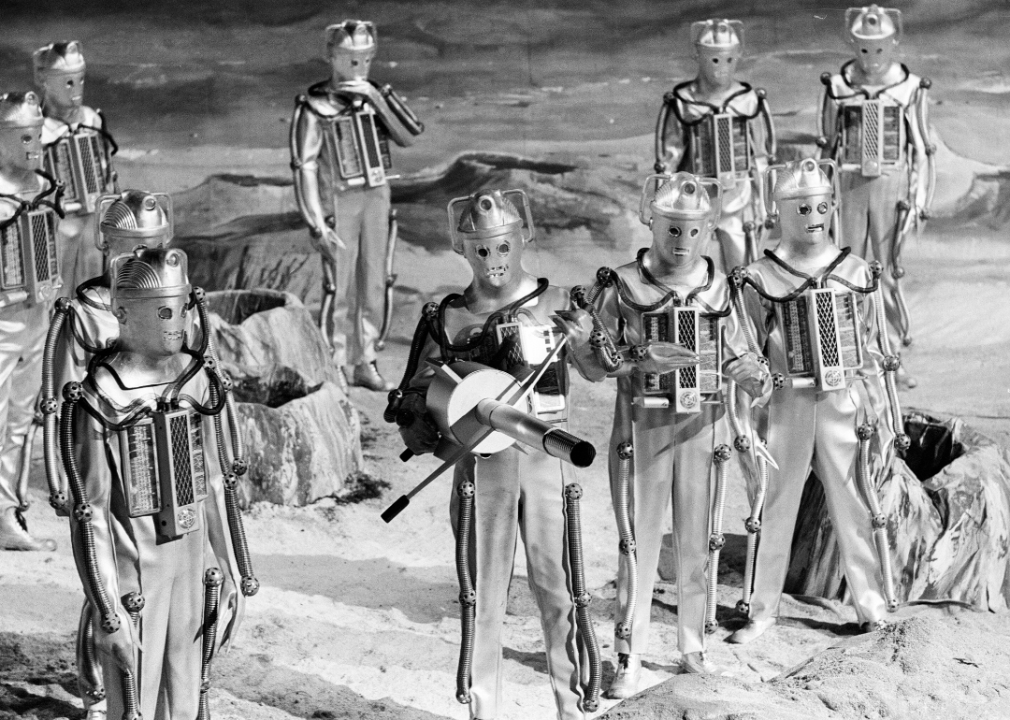
Daily Mirror/Mirrorpix/Mirrorpix via Getty Images
Cyborg
Cyborgs on the television show ‘Doctor Who’.
Cyborgs—part-human, part-machine people—are abundant in science fiction, but they weren’t referred to as such until fairly recently. In 1960, Manfred E. Clynes and Nathan S. Kline coined the term while hypothesizing about the future potential need to enhance humans as space exploration first took off.
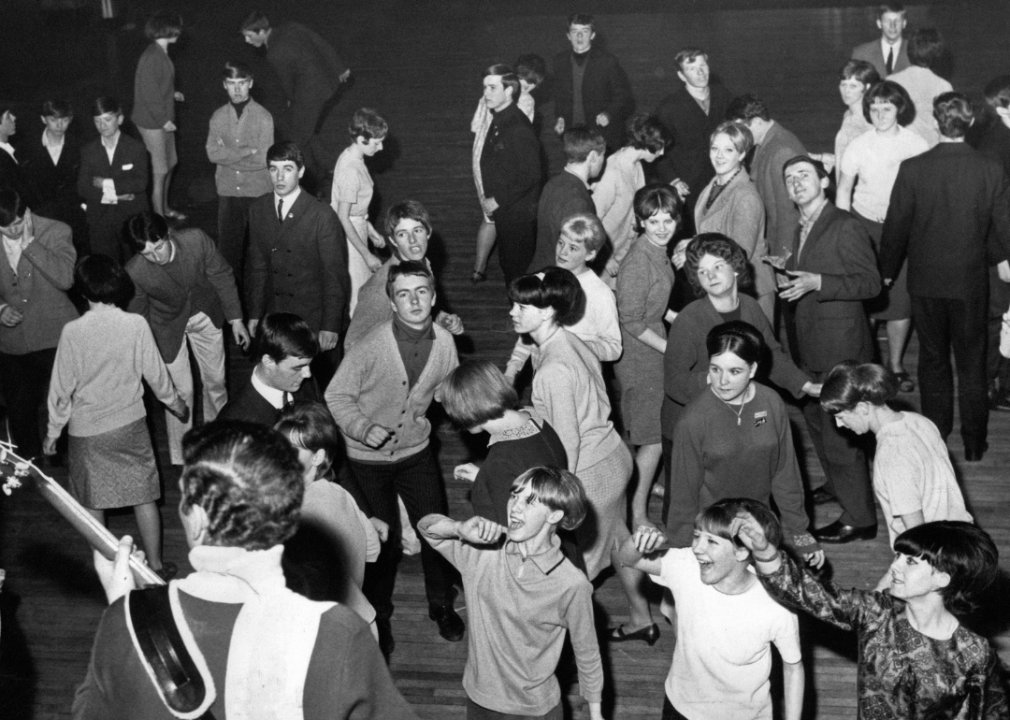
Daily Record/Mirrorpix/Mirrorpix via Getty Images
Dance-off
Teenagers dancing the twist at a dancehall.
Dance-offs consist of competitions between dancers who must out-dance their opponents. The term was popularized in 1967 when the dance and music program “American Bandstand” introduced a dance contest involving couples.
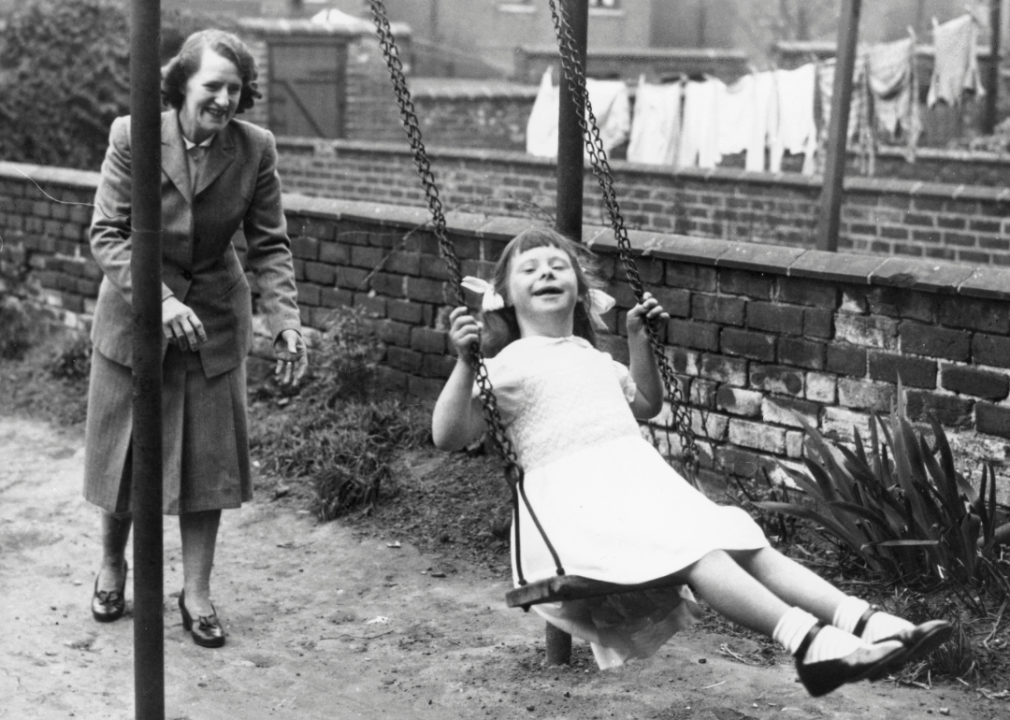
Daily Herald Archive/National Science & Media Museum/SSPL via Getty Images
Down syndrome
Mother pushes daughter on swing.
People with Down syndrome have an extra chromosome, leading their brains and bodies to develop differently. It was originally known as “Mongolism” or “Mongolian Idiocy” before geneticists and allies of the Down syndrome community lobbied for the name to be changed. The World Health Organization officially approved this designation in 1965.

Canva
Dragon fruit
Dragon fruit close up.
Dragon fruit refers to the fruit of the Hylocereus cactus, which is native to Mexico and Central America. When the fruit began to be more widely consumed in majority-English-speaking countries, the word “dragon fruit” emerged, referring to its dragonlike red skin and green scales.
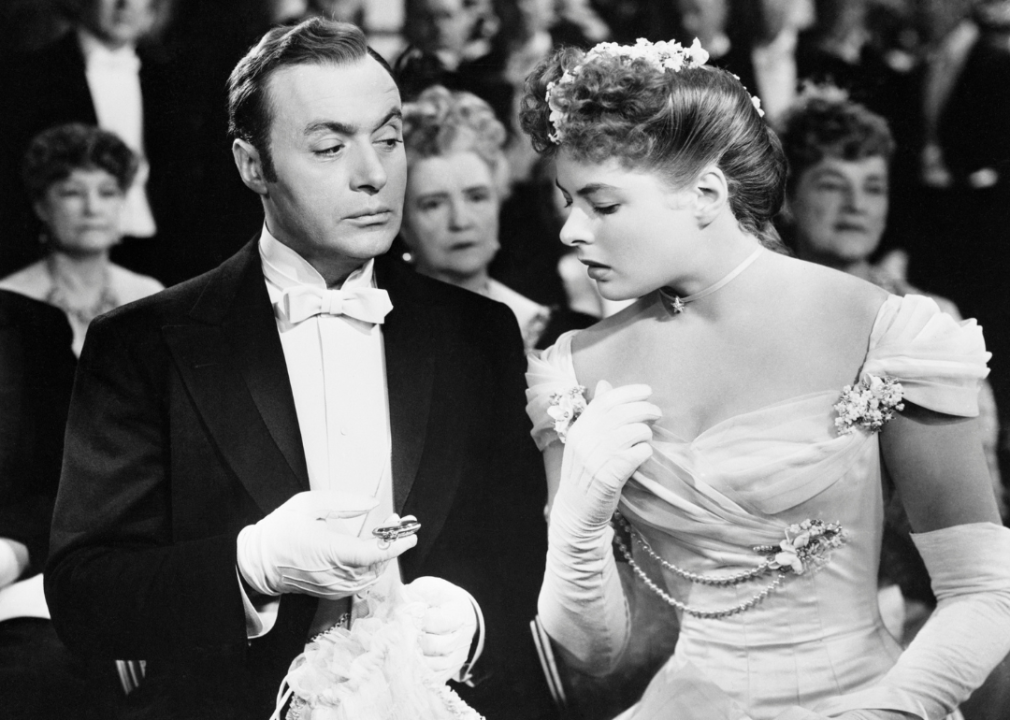
Bettmann // Getty Images
Gaslighting
Charles Boyer and Ingrid Bergman in a scene from ‘Gaslight’.
Dating back to British novelist-playwright Patrick Hamilton’s 1938 play “Gas Light” and its subsequent 1944 American film adaptation, gaslighting describes an abuse tactic where a victim is manipulated to doubt the reliability of their own thoughts and perception of reality. An early use outside of fiction in A.S.C. Wallace’s book “Culture and Personality” described gaslighting as a potentially “mythical crime.”

Lazy_Bear // Shutterstock
Jack Russell terrier
Jack Russell Terrier with ball.
These popular family dogs officially received their name in 1961, but they’ve been around since they were originally bred by English clergyman John “Jack” Russell. An avid huntsman, Reverend Russell bred these terriers to have great stamina and courage, perfect for chasing game.
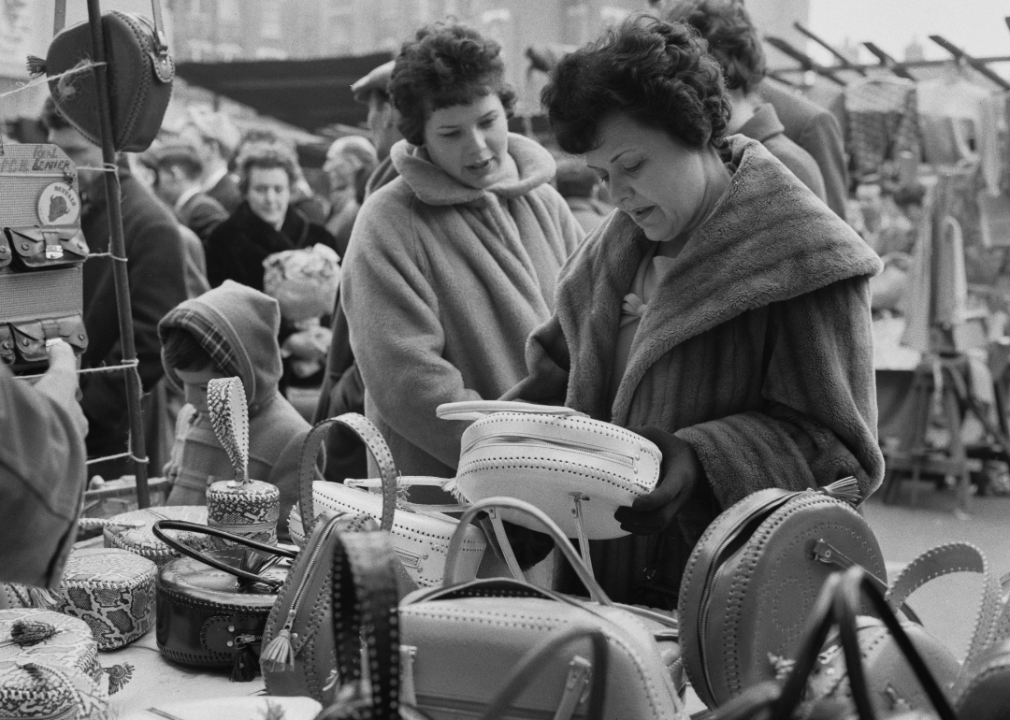
Evening Standard/Hulton Archive // Getty Images
Knockoff
Two women handbag shopping in street market.
Knockoffs are copies of popular goods, such as fashion brands or artwork. Knockoffs aren’t illegal as long as consumers don’t mistake them for the original brands. Counterfeits, however, use a well-known brand’s trademark and closely resemble the original. These are illegal and can set copycats back millions of dollars.

TORU YAMANKA/AFP via Getty Images
Magnetic levitation
Maglev train under development in Japan.
In the age of “The Jetsons,” it’s unsurprising that magnetic levitation came into the lexicon. The first magnetic levitation train design patent was given to James Powell and Gordon Danby of Brookhaven National Laboratory. However, it was only in 2003 that Powell’s idea came to life commercially in Shanghai.
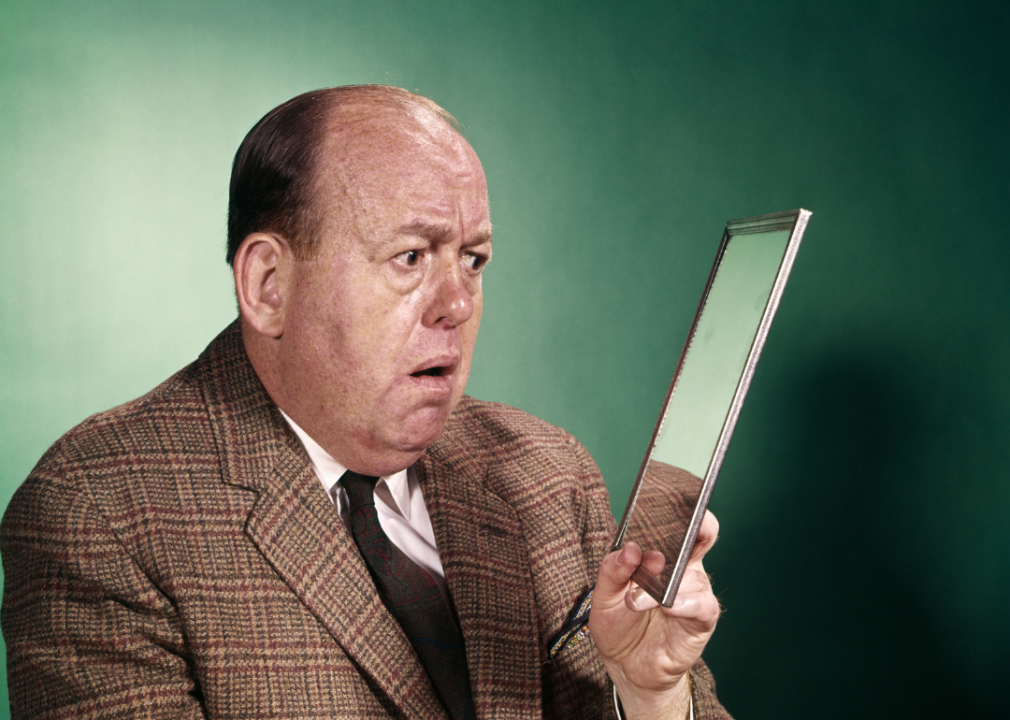
H. Armstrong Roberts/ClassicStock // Getty Images
Midlife crisis
Middle age man looking in mirror.
Upon entering middle age, it’s not uncommon for people to experience a period of turmoil marked by a fear of mortality and a desire for change. The term was first coined in a 1965 paper published by Canadian psychoanalyst Elliott Jaques, who noted that people during this period are forced to confront their limitations regarding their futures.
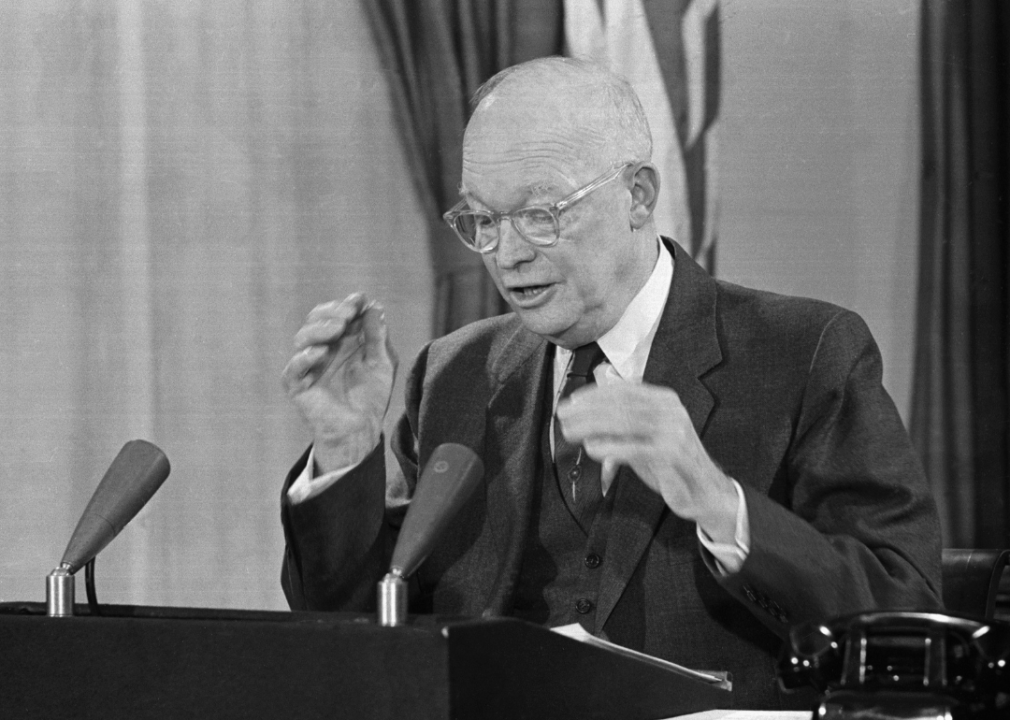
Bettmann // Getty Images
Military-industrial complex
Dwight D. Eisenhower gives his farewell speech.
A military-industrial complex forms when the military forges informal alliances with defense contractors and politicians. It gained popularity after President Dwight D. Eisenhower used the phrase during his 1961 farewell address, warning of the dangers of misplaced power.

angellodeco // Shutterstock
Monkeypox
Researcher holding test tube with monkey pox virus.
Monkeypox—now known as mpox—was launched back into the mainstream in 2022, when the World Health Organization declared a health emergency over an outbreak that eventually spanned 87,000 cases in 170 countries. First coined in 1960, it’s a disease transmitted to people through physical contact with open wounds or bodily fluids from infected people or animals.

Friends Stock // Shutterstock
Ob-gyn
Doctor holding stethoscope on pregnant woman’s stomach.
The word ob-gyn combines the fields of obstetrics (concerning all things pregnancy and childbirth) and gynecology (concerning all things reproductive health), referring to medical professionals who work in both fields. Although the word was coined in 1960, gynecology is one of the oldest medicinal branches, dating back to ancient Egyptian times.

Debrocke/ClassicStock // Getty Images
One-liner
Boy laughing at joke book.
If you’ve ever delivered a witty, short joke, congratulations! You’ve uttered a one-liner, a popular comedy term that became official in 1962.
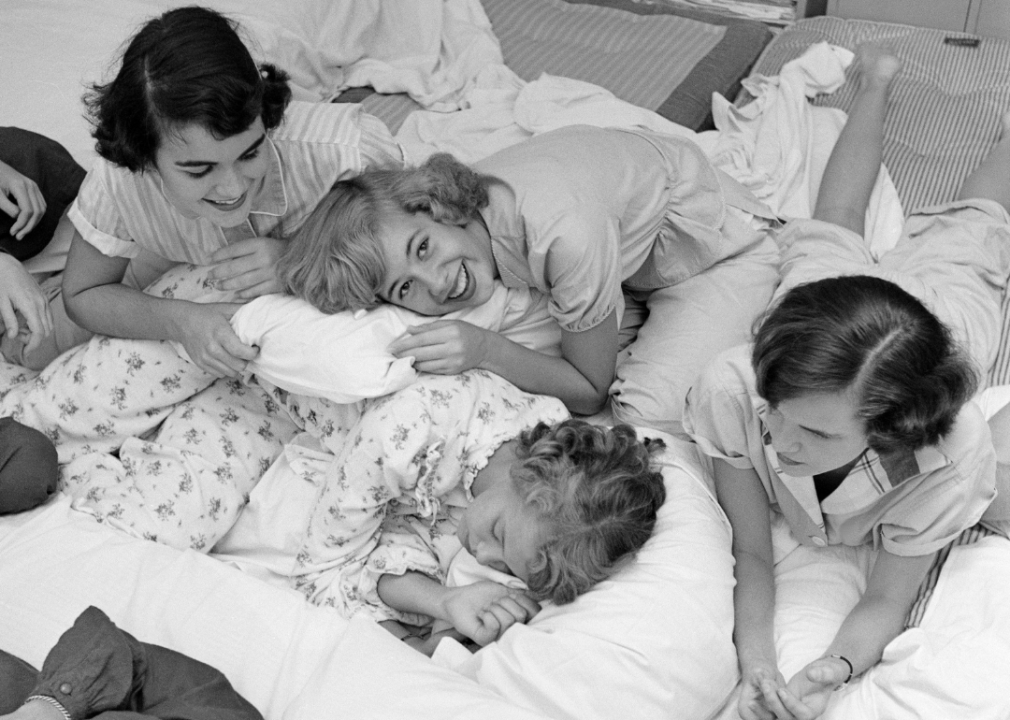
Genevieve Naylor/Corbis via Getty Images
Sleepover
Teenagers at a sleepover.
The modern concept of sleepovers was popularized in the 1950s and 1960s, alongside the rise of suburban communities. According to Paula Fass, a professor emeritus at the University of California, Berkeley, children could have friends stay overnight now that they commonly had their own bedrooms.

GMars // Shutterstock
Sudden infant death syndrome
Empty baby crib.
Sudden infant death syndrome, commonly called SIDS, was first coined in 1969. It focused people’s attention on healthy infants unexpectedly dying before one year of age. This condition is also called “crib death” since these deaths often occur while babies are in their cribs.

Bettmann // Getty Images
Telenovela
Woman watches television show.
Telenovelas are popular Latin American dramas whose melodramatic storylines and abundant plot twists have much in common with their American soap opera counterparts. First popularized as radio dramas in the 1930s, telenovelas took off in countries like Brazil and Cuba in the 1950s. By the next decade, they featured storylines tackling taboo onscreen topics like violence, incest, and sex.

Albert Moote/Michael Ochs Archives // Getty Images
Theme park
Sleeping Beauty’s Castle at Disneyland in Anaheim.
In 1960, “theme park” was first used to describe amusement parks whose attractions and structure involved a specific theme. The term’s rise in popularity also coincided with the popularity of Disneyland, which opened in 1955. While amusement parks had already existed, offering people a variety of rides and games, at Disneyland, these were now attractions that all clung to a central theme, where rides, shops, venues, and games were all coordinated.
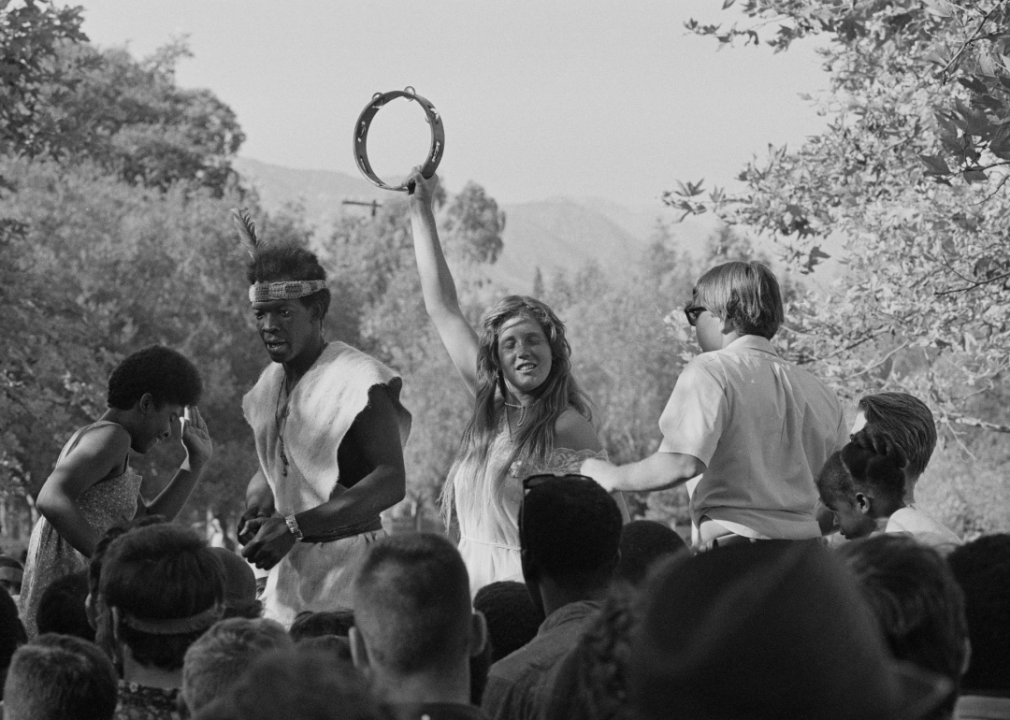
Graphic House/Hulton Archive // Getty Images
Vibe
People dancing at a love-in.
Vibe has had a colorful history. In 1935, it first meant the musical instrument vibraphone. In the late 1960s, “vibe” meant a distinctive feeling or quality given off by a place, person, or thing. The term became popular as a way to respond to fears that conforming to societal norms took away the excitement of life. By 1971, it took on yet another sense, which meant to jive or be in harmony with someone.

Ahanov Michael // Shutterstock
Ziplock
Frozen vegetables in Ziploc bag.
Life without ziplocks can be hard to imagine these days, but Ziploc bags were only tested in public in 1968—the same year “ziplock” was added to the dictionary. At first, Steven Ausnit, who developed Ziplocs, first began testing plastic zippers in 1951. By 1962, the prototype included a plastic bag and a separate zipper attachment. It was in 1965 when zipper and bag finally came together with its iconic press-and-seal function.
Story editing by Carren Jao. Copy editing by Paris Close.





